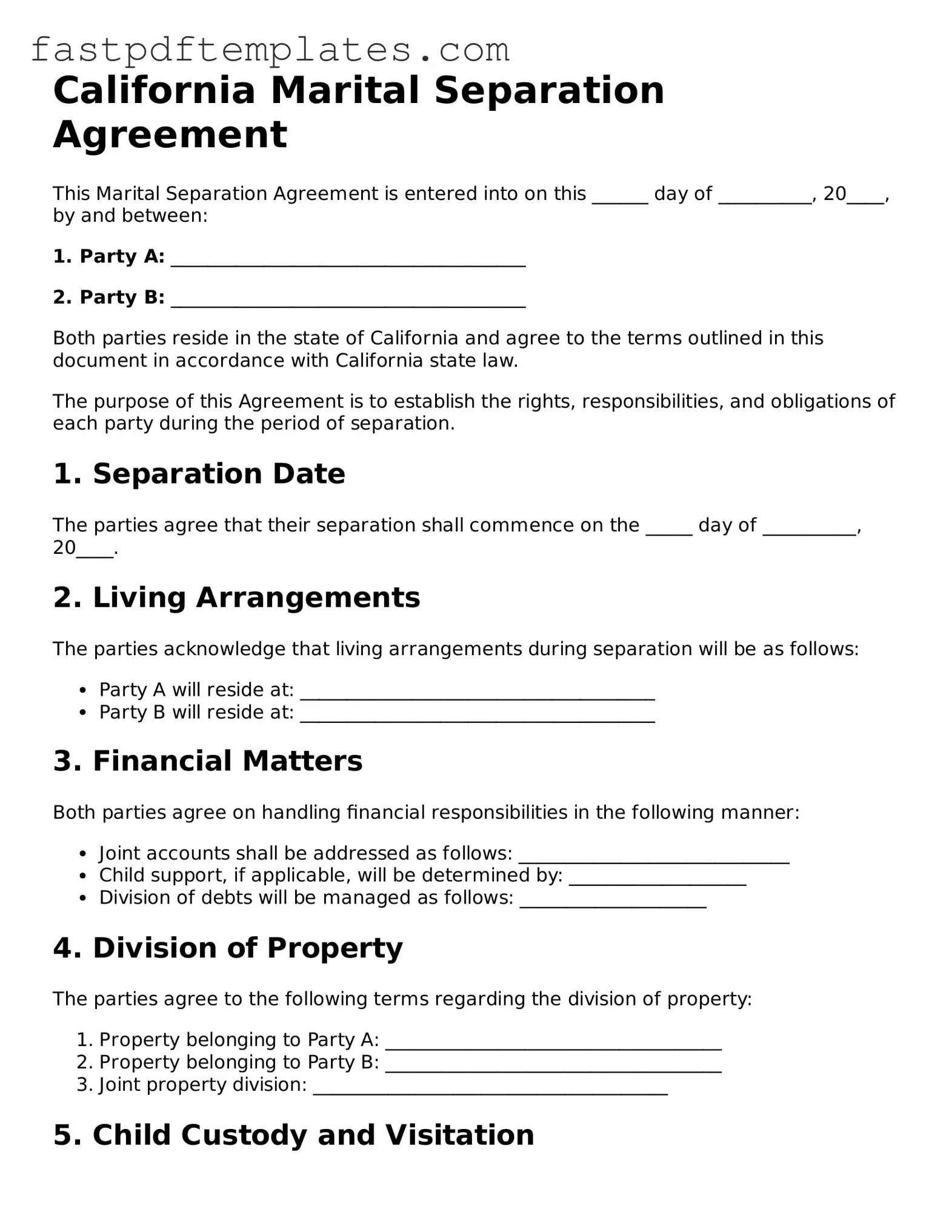California Marital Separation Agreement
This Marital Separation Agreement is entered into on this ______ day of __________, 20____, by and between:
1. Party A: ______________________________________
2. Party B: ______________________________________
Both parties reside in the state of California and agree to the terms outlined in this document in accordance with California state law.
The purpose of this Agreement is to establish the rights, responsibilities, and obligations of each party during the period of separation.
1. Separation Date
The parties agree that their separation shall commence on the _____ day of __________, 20____.
2. Living Arrangements
The parties acknowledge that living arrangements during separation will be as follows:
- Party A will reside at: ______________________________________
- Party B will reside at: ______________________________________
3. Financial Matters
Both parties agree on handling financial responsibilities in the following manner:
- Joint accounts shall be addressed as follows: _____________________________
- Child support, if applicable, will be determined by: ___________________
- Division of debts will be managed as follows: ____________________
4. Division of Property
The parties agree to the following terms regarding the division of property:
- Property belonging to Party A: ____________________________________
- Property belonging to Party B: ____________________________________
- Joint property division: ______________________________________
5. Child Custody and Visitation
Should there be minor children involved, the parties agree to the following custody and visitation arrangements:
- Custody of the children will be: __________________________________
- Visitation rights will be arranged as follows: ____________________
6. Additional Provisions
The parties may agree to additional terms and conditions as follows:
- ___________________________________________________________________
- ___________________________________________________________________
7. Acknowledgment
Both parties acknowledge that they have had the opportunity to seek independent legal advice regarding this Agreement and fully understand its implications. This Agreement represents the complete understanding between the parties concerning their separation.
Signed this _____ day of __________, 20____.
______________________________________
Party A
______________________________________
Party B
